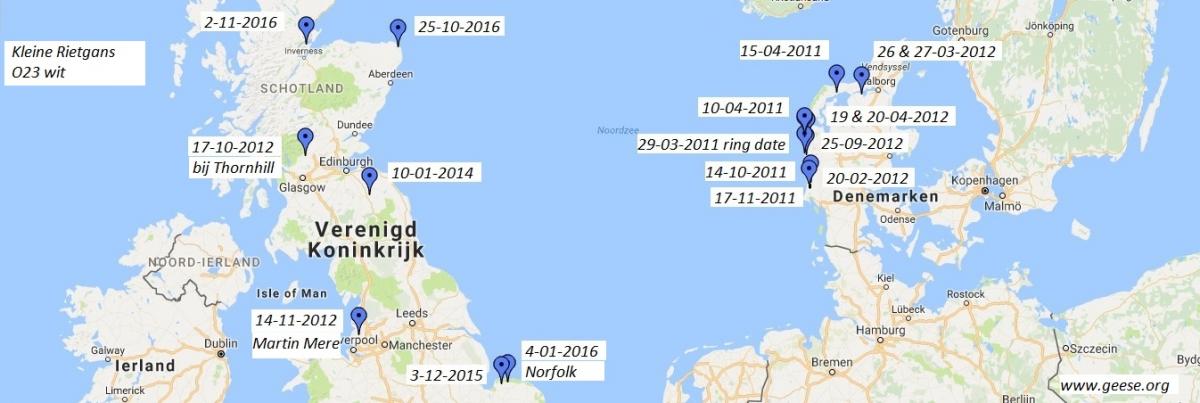Date:

British researcher Carl Mitchell detected the Pink-footed Goose male O23 white on 2 november 2016 near Udale Bay in Scotland in a large group of pinkfoots. To our knowlegde, this is the first record of a Pink-footed Goosed ringed in Spitsbergen that joined the Icelandic pinkfoots which winter in the United Kingdom.
Pinkfoot O23 was ringed as an adult in Denmark in March 2011. The next month the bird, surely heading for Spitsbergen, was seen twice in northern Denmark. The re-sightings in ‘geese.org’ indicate that he spent the winter of 2011/2012 in Denmark. The following winter O23 was seen for the last time in Denmark, on 25 September. Three weeks later he was first recorded in Scotland and all consecutive sightings came from the United Kingdom.

Based on O23’s life history, Jesper Madsen, professor at Aarhus University and project director of the Pink-footed Goose project, suspects it is likely that this male represents “the first evidence of a marked bird emigrating permanently from the Svalbard population to the UK/Icelandic population” (personal comment to Jan Kramer on 5 Nov. 2016). For background information on such population switches in pinkfoots, he refers to the article “Connectivity between flyway populations of waterbirds: assessment of rates of exchange, their causes and consequences” in het Journal of Applied Ecology 2014, 51, 183–193 by himself, Rune S. Tjørnløv, Morten Frederiksen, Carl Mitchell and Arnór Th. Sigfússon. The summary of that article mentions that “none of the birds from the eastern population emigrated permanently, but some individuals turned up in Britain in consecutive years”.
The life history of O23 now suggests that a permanent emigration of birds from the Svalbard population to the western Icelandic population is indeed a possibility.
Januari 2017, Jan Kramer